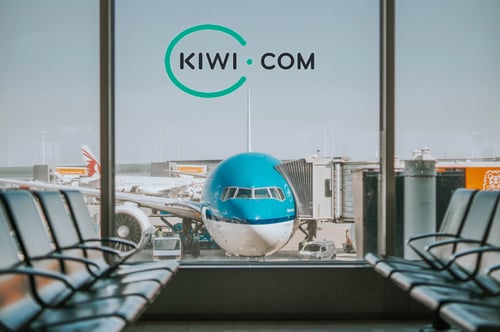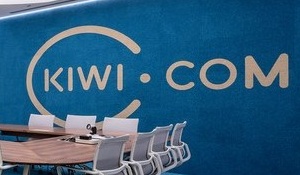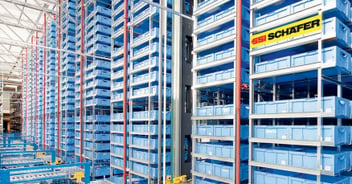Customer Profile
CEO Oliver Dlouhy together with CTO Jozef Kepesi founded Kiwi.com in 2012 to provide users with the most affordable flight and ground transportation combinations and itineraries. Today, the company sees more than 100 million searches every day and employs over 2,600 people worldwide. The site makes travel accessible and easy by allowing users to book everything from individual journeys to complete itineraries across multiple carriers (both low cost and full-service) in a straightforward and cost-effective way.
Kiwi.com ranked seventh in the 2017 Deloitte Technology Fast 500 EMEA list, becoming the highest-ever rated Czech company. Following the previous success, Kiwi.com ranked fifth in the very same program in 2018. In November 2019, the company announced a change in its vision of becoming the first Virtual Global Supercarrier and won the People’s Choice Award at Phocuswright Conference in Miami.
Challenge
The main challenges were to safeguard the print environment, unify a disjointed print environment and reduce print services costs.With the growth of the company, Kiwi.com experienced demands to solve its print infrastructure, mainly to simplify and streamline printing processes. The IT support team had struggled with complex solutions across the company’s headquarters and branch offices. There was no centralized management or control of print processes. Additionally, the company wanted to increase security of its documents as its documents can contain personal information.
In 2016, Kiwi.com’s management decided to unify print service management under one supplier and one print management system - YSoft SAFEQ 6.
Previously, Kiwi.com’s print services management was an extremely challenging and complex task for IT due to the number of employees and a variety of requirements that go hand in hand with the rapid growth of the company.
Kiwi.com felt the need to increase efficiency in cost planning for print services management. In a global environment, the company needed its business to allocate the costs of providing print services transparently and accurately.
Day-to-day operations at Kiwi.com include print services management and
administration, daily operation of print equipment, including basic servicing or supplying of printing materials, installation and connection of printers in new facilities, separation of print jobs and related security when printing internal materials.
Solution
“We chose SAFEQ 6 because of its product strengths that are confirmed by their customers around the world. Use of SAFEQ 6 in all our international offices is an important aspect for us. Its flexible reporting, cost-reducing tools, security and ability to unify our print infrastructure played a role in our decision making. The solution from Y Soft also meant fewer requirements for our server infrastructure,” said David Pavlik, CIO at Kiwi.com.
The original print services environment was relatively heterogeneous, with a low number of printers at headquarters (10 devices). However, each printer needed to be installed on each employee’s computer. Working on basic printer installation and related problems was an inefficient use of IT’s time. The amount of time became significant as the company hired more people. It also meant the support team had a very limited opportunity for unified and effective administration of the print fleet. Just deploying SAFEQ 6 already solved problems related to the internal support team’s capabilities. Installing printers on employee computers is now centralized and faster. Monthly, this saved the IT team tens of hours of work.
“We chose SAFEQ 6 because of its product strengths that are confirmed by their customers around the world. Use of SAFEQ 6 in all our international offices is an important aspect for us.” David Pavlik, CIO at Kiwi.com
Securing confidential documents and separating print jobs are challenges in many organizations. For Kiwi.com, this was also true.
Every day employees were forced to run to the printer right away after sending a print job, so that documents were not mistakenly picked up or even dumped into the waste bin by others. This was particularly concerning for sensitive internal documents. SAFEQ 6 eliminated this problem with its separation and document security features. Employees can now work more comfortably and securely as documents are not printed until the user authenticates at the printer.
Benefits
Kiwi.com successfully centralized its management of print services.
Main benefits of SAFEQ S are flexible reporting and security demands, reducing time demands on the IT team, securing and separating print jobs and the availability of digitalization and scanning of documents.
An added value for the airline tickets provider is improved service availability and guaranteed timely technical support.
Airline ticket provider centralizes its printing environment, reduces its printing costs by 40-50% and saves IT resources.
Previously, costs were planned based on the total purchase of materials for a certain period and according to page counters on the printers. This method was inaccurate and did not meet their needs. Now with SAFEQ 6, they have flexible reporting options and accurate cost tracking.
After a few months of SAFEQ 6, the IT team at Kiwi.com reduced the total costs of printing by 40-50%. The concept of print jobs sitting next to printers, the loss of print jobs and having to resubmit them, and the potential leak of internal documents has been removed. This also saved on printing materials providing a more positive environmental impact.
Prior to using SAFEQ 6, Kiwi.com’s printers processed approximately 25,000 print jobs per month. SAFEQ 6’s reporting showed that after the deployment of SAFEQ 6, the average number of print jobs is around 14,000 per month. Of this number there are about 6,000 black and white print jobs and 8,000 color print jobs.
Employees appreciated SAFEQ 6’s print features. “We like the ability to save a list of documents we reprint regularly and reprint them directly from the printer without submitting a print job from our computers. For example, there are various new employee onboarding documents that we always need to print,” said Tomas Smetana, End User Support at Kiwi.com.
At Kiwi.com, installing SAFEQ 6 also increased the use of document capture, which gave them a greater opportunity to replace traditional paper documents in its archives. Scanning was not a much-used process at Kiwi.com until SAFEQ 6. Now, scanning is replacing the original paper-based workflows.




